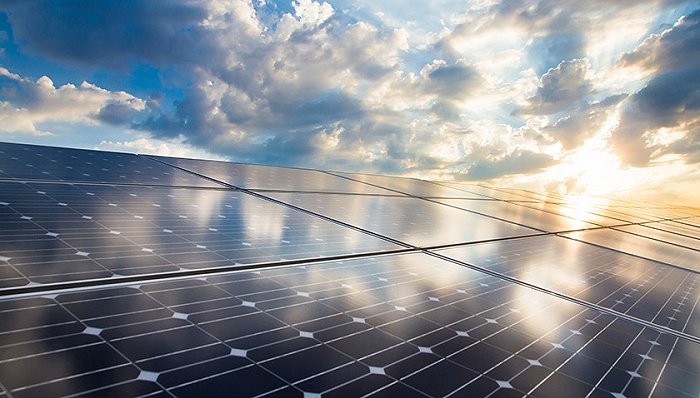Photovoltaic has become China's second largest power source
time:2023-07-21 08:46:00 Views:0 author:Jinan Freakin Power Ltd.
"In the first half of the year, the photovoltaic industry handed over a brilliant report card." On July 20, Xing Yiteng, director of the New Energy and Renewable Energy Department of the National Energy Administration, said at the Seminar on the Review of the Development of the Photovoltaic Industry in the First Half of 2023 and the Outlook for the Second Half of the Year held in Xuancheng, Anhui.
One of the report cards reflects that the new installed capacity of photovoltaics in the first half of the year is basically the same as that of last year, accounting for 56% of the total installed capacity of new power sources. Photovoltaic power is already the second largest power source in China's installed capacity, second only to coal power.
Second, the photovoltaic industry has an obvious effect in driving investment in fixed assets. In the first half of the year, the investment in photovoltaic power generation exceeded 130 billion yuan, accounting for about 50% of the total investment in renewable energy, and played an important role in the economic recovery and growth in the post-epidemic era.
Third, the photovoltaic power generation capacity continues to grow. According to Xing Yiteng, the photovoltaic power generation in the first half of the year was 266.3 billion kwh, an increase of about 30% year-on-year, and the average utilization rate was 98%.
Fourth, the level of photovoltaic technology continues to improve. The efficiency of some mass-produced advanced cells has reached 25.5%, and the commercialization of new cells such as heterojunction and perovskite has been significantly accelerated. Fifth, the production capacity of all links in the industry has been fully released, and industry prices have returned to normal.
On the evening of July 19, the National Energy Administration released data showing that in the first half of this year, the country's renewable energy development momentum was good, and the total installed capacity of renewable energy power generation exceeded 1.3 billion kilowatts.
As of the end of June, the country's installed hydropower capacity was 418 million kilowatts, wind power installed capacity was 390 million kilowatts, solar power installed capacity was 471 million kilowatts, and biomass power generation installed capacity was 43 million kilowatts.
On the whole, from January to June this year, China's new installed capacity of renewable energy power generation was 109 million kilowatts, accounting for 77% of the country's newly installed capacity. Among them, hydropower was added 5.36 million kilowatts, wind power was added 22.99 million kilowatts, solar power was added 78.42 million kilowatts, and biomass power generation was added 1.76 million kilowatts.
The National Energy Administration stated that renewable energy has further consolidated its position as the main body of newly installed domestic power generation, and its role in ensuring energy supply and promoting clean and low-carbon transformation has become more and more prominent.
Regardless of the new installed capacity or the cumulative installed capacity in the first half of the year, solar energy has surpassed renewable energy such as wind power and hydropower, and has played a very important role in the country's energy transformation.
Xing Yiteng pointed out at the meeting that while achieving a series of achievements, the photovoltaic industry still has a long way to go to achieve the goal of carbon peaking, carbon neutrality, and high-quality development. The international and domestic environments of the photovoltaic industry are developing rapidly, and opportunities and challenges coexist.
Internationally, countries are speeding up energy transformation. The United States, the European Union and other countries and regions have introduced a number of favorable policies to support the development of their own new energy industries and continue to seek the comprehensive localization of the manufacturing end of the industrial chain.
In China, while the prospects for photovoltaics are broad, the scale of expansion in the upstream of the industry is huge. "There have been some signs of overheating in the industry, and the mandatory guarantee of bundling industries before the deployment of new energy projects in various places has exacerbated these chaos." Xing Yiteng said.
He pointed out that in the first half of this year, due to various reasons such as post-epidemic project construction and centralized production of photovoltaic power generation, the scale of new installed capacity has increased significantly, the contradiction between power consumption and grid access has become more obvious, and the risk of ups and downs in the industry is increasing. The county’s rooftop distributed photovoltaic development pilot project and household photovoltaic development still infringe on the interests of farmers, which needs to be further regulated.
Xing Yiteng said that with the rapid expansion of distributed photovoltaics, the distribution network has insufficient carrying capacity and prominent contradictions, and the participation of distributed photovoltaics in the power market has been put on the agenda. These problems require the joint efforts of all parties to promote solutions.
In his speech, Yang Xudong, deputy director of the Electronic Information Department of the Ministry of Industry and Information Technology, also affirmed the stable and positive development momentum of the photovoltaic industry in recent years. "In the past 20 years, the photovoltaic industry has experienced ups and downs and ups and downs in development, and is currently in a critical period of a new round of innovation and rapid development." Yang Xudong said.
He also pointed out some of the practical challenges facing the industry. Some trade restrictive measures proposed by many countries and the trend of "anti-globalization" have intensified, putting forward higher requirements for China's photovoltaic industry.
At the same time, with the rapid growth of domestic photovoltaic scale, there are still some hidden concerns of supply and demand imbalance in the industrial chain supply chain, a new round of low-level construction and disorderly competition have emerged, and forward-looking technology layout and basic theoretical research are still insufficient. The construction of the photovoltaic standard testing and certification system and the construction of a common platform for the industry's development environment need to be further improved.
In addition, some photovoltaic power plants deployed earlier are facing decommissioning, and the recycling of photovoltaic modules has become a new problem that the industry needs to face. In terms of the green circular development of the entire industry chain and the management of the entire life cycle of the industry, it is necessary to respond and give some guidance in policy.
For the development of photovoltaic industry, Xing Yiteng put forward four suggestions. First, insist on innovation as the primary driving force and consolidate the global leading position. The second is to adhere to the principles of marketization and rule of law to promote high-quality development of the industry.
The third is to adhere to the system concept and better integrate into the new energy power system. The fourth is to adhere to the problem orientation, further standardize the whole county pilot and household photovoltaic market, and promote the sustainable and healthy development of distributed photovoltaic.
Yang Xudong said that in the next step, the Ministry of Industry and Information Technology will focus on promoting the innovation and development of the photovoltaic industry, and thoroughly implement the standard conditions of the photovoltaic manufacturing industry. At the same time, strengthen the coordinated development of the energy electronics industry, continue to optimize the development environment of the photovoltaic industry, guide industry and finance to strengthen cooperation, and unswervingly promote international exchanges and cooperation.
In the first half of the year, China's photovoltaic exports also achieved impressive results. Wang Bohua, honorary chairman of the China Photovoltaic Industry Association, said at the meeting that in the first half of 2023, the total export volume of China's photovoltaic products (silicon wafers, cells, modules) is estimated to exceed US$29 billion, a year-on-year increase of about 13%, and the overall export situation is good.
Wang Zhenfu, deputy investigation commissioner of the Trade Remedy and Investigation Bureau of the Ministry of Commerce, suggested in his speech that in the face of a complex and severe external environment, enterprises should keep abreast of changes in international economic and trade policies, reduce the impact of trade barriers and unfavorable international trade rules, and make medium and long-term plans for investment and production. In addition, the industry must grasp the development trend of the industry and guide the industry ecology.
Under the optimistic expectation of the development of the industry, the China Photovoltaic Industry Association raised the forecast of new global photovoltaic installed capacity this year from 280-330 GW to 305-350 GW.





